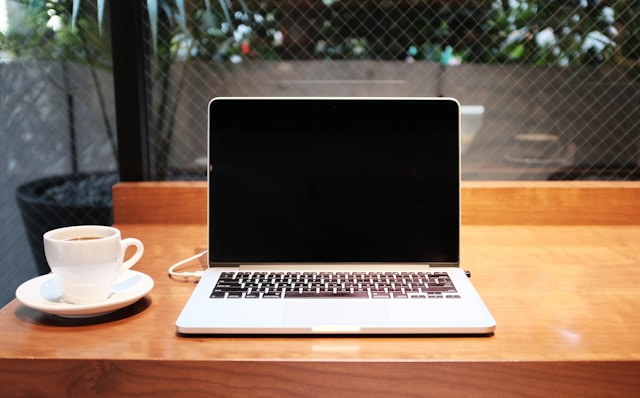MacPorts is a powerful open-source package management system for macOS, allowing developers to install and manage Unix-based software easily. However, with the rise of modern tools like Homebrew and Nix, many users in 2025 are switching package managers for better performance, compatibility, and simplicity.
If you’ve decided to remove MacPorts completely whether to switch to another tool or clean up your macOS environment, this guide explains exactly how to uninstall MacPorts safely and fully, including configuration cleanup, hidden files, and post-removal verification.
Why Uninstall MacPorts?
Before jumping into removal, it’s important to understand why many developers are making this move in 2025.
1. Migration to Homebrew or Nix
Homebrew’s simplified syntax and integration with Apple Silicon (M1–M3 chips) make it more appealing to developers who want fewer dependency conflicts.
2. Disk Space Optimization
MacPorts maintains its own directory tree and builds many packages from source, which can easily occupy 10–15 GB of disk space especially after multiple updates.
3. Simplifying System Maintenance
MacPorts modifies environment variables (like PATH and MANPATH). Over time, these changes can conflict with Xcode, Python, or other development setups.
Methods to Uninstall MacPorts
There are two main ways to uninstall MacPorts from macOS:
-
Automated removal (using the uninstall script)
-
Manual removal (for advanced users)
Let’s explore both in detail.
Method 1: Automated MacPorts Uninstallation (Recommended for 2025)
This is the easiest and safest approach ideal for most users.
Step 1: Open Terminal
Launch the Terminal app on your Mac.
Step 2: Run the MacPorts Uninstall Command
Type the following command:
This removes all installed ports (packages) from your MacPorts setup.
Step 3: Use the Built-In Uninstaller Script
Next, execute the self-uninstall script:
Step 4: Remove Configuration Files
Finally, clean up user-specific settings:
After running these commands, restart your Mac to finalize cleanup.
Method 2: Manual Uninstallation (Advanced Users)
If the uninstall script fails or you want precise control over the removal process, you can manually delete each component.
Step 1: Stop MacPorts Services
Before deleting files, stop any background processes:
Step 2: Delete the Core Directories
Remove the MacPorts main directories:
Step 3: Clean Tcl Configuration
MacPorts installs Tcl configuration files for system integration. Remove them with:
Step 4: Remove Launch Daemons and Receipts
Delete startup and system components:
Step 5: Reset PATH Variables
Edit your shell configuration files to remove MacPorts entries:
For Zsh (default on modern macOS):
For Bash:
Look for and delete lines like:
Save and close the file, then restart your Terminal.
Verify MacPorts Has Been Fully Removed
After uninstalling, confirm that no traces remain:
If the output is blank or returns “command not found,” MacPorts is successfully removed.
You can also check for residual files:
If the directory doesn’t exist, you’re clean.
Expert Tips for Smooth Transition After Uninstalling
1. Install an Alternative Package Manager
If you still need to manage packages, consider switching to Homebrew or Nix, both of which integrate seamlessly with modern macOS environments.
Feature |
MacPorts |
Homebrew |
Nix |
|---|---|---|---|
Speed |
Slower (source builds) |
Fast (binary packages) |
Fast (declarative builds) |
Apple Silicon Support |
Partial |
Full (M1–M3) |
Full |
Ease of Use |
CLI-heavy |
Simple commands |
Complex but powerful |
Isolation |
System-wide |
User-based |
Fully isolated environments |
2. Reclaim Disk Space
After removing MacPorts, empty the Trash and run:
This cleans temporary system files and rebuilds caches for better performance.
3. Reinstall Development Tools (if needed)
If you plan to use another package manager, reinstall Xcode Command Line Tools:
People Also Ask
1. Can I reinstall MacPorts after uninstalling it?
Yes. You can reinstall it anytime from the official MacPorts installer or using source code. Just ensure your old directories are fully removed to avoid conflicts.
2. Does uninstalling MacPorts remove all my installed apps?
Yes, all software installed through MacPorts will be deleted. If you need to preserve data, back up the /opt/local/var/macports/ directory first.
3. How is MacPorts different from Homebrew?
MacPorts builds software from source by default, while Homebrew downloads precompiled binaries. Homebrew is faster but less customizable for developers needing specific build flags.
4. Is it safe to delete the /opt/local directory manually?
Yes, as long as you confirm no other applications rely on that path. It’s used exclusively by MacPorts.
Final Thoughts
Uninstalling MacPorts isn’t just about freeing space, it’s about modernizing your development environment. As of 2025, tools like Homebrew and Nix provide faster builds, better Apple Silicon optimization, and smoother integration with macOS Ventura and Sonoma.
By following this guide, you’ve not only removed MacPorts completely but also set the stage for a cleaner, more efficient system ready for the next generation of macOS development workflows.









